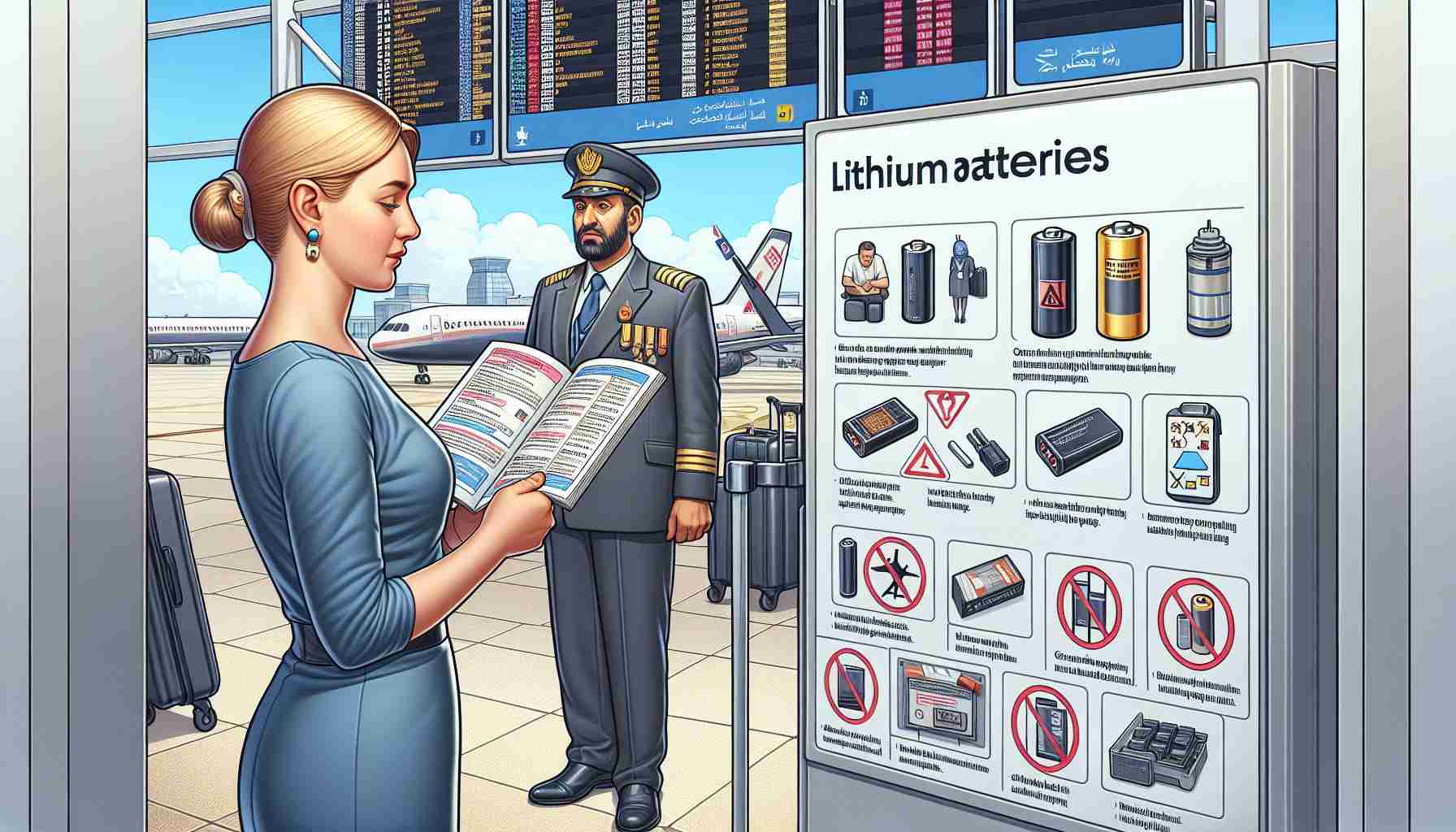Lithium batteries have become an essential power source for many of our modern devices, but when it comes to air travel, the rules become much more strict. The fact remains that lithium batteries are highly flammable and pose a significant risk if they catch fire, especially when on an airplane. While ground fires can typically be extinguished easily, the situation changes entirely when up in the air due to limited resources, enclosed space, recycled air, and other factors.
A real-life incident at Melbourne’s Tullamarine airport serves as a stark reminder of the potential dangers associated with lithium batteries on planes. In 2014, a lithium battery fire was detected in the cargo hold of a Fiji Airways flight just before takeoff, narrowly avoiding a catastrophic incident. This incident highlights the critical importance of adhering to the rules and restrictions on transporting lithium batteries during air travel.
To ensure safe air travel, it is crucial to understand and follow the regulations for carrying lithium batteries. Here are some key tips:
1. Spare batteries, regardless of size, must never be placed in checked luggage. Always carry them in your carry-on baggage to prevent accidents.
2. Protect the terminals of spare batteries from short-circuiting by keeping them in their original retail packaging, insulating terminals with tape, or placing each battery in a separate plastic bag or protective pouch.
3. Batteries under 100Wh rating (commonly found in laptops and tablets) are generally allowed in both checked and carry-on luggage. However, it is still recommended to carry them in your carry-on bag for easy monitoring.
4. Batteries between 100-160Wh rating require prior approval from your airline before flying. Make sure to contact your airline well in advance to obtain permission.
5. Batteries above 160Wh rating, unless for wheelchairs or mobility aids, are prohibited. If you need to transport batteries of this capacity, they must be declared as dangerous goods cargo and approved by your airline.
6. Communicate with check-in agents and your airline regarding any concerns or questions about lithium battery transportation to ensure a smooth and safe travel experience.
Ultimately, it is the responsibility of every traveler to ensure that the items they are packing, including lithium batteries, do not pose any risks to themselves or fellow passengers. Consulting the CASA dangerous goods apps for Android and Apple can provide further guidance on what can and cannot be packed safely. Remember, adhering to these regulations not only keeps you safe but also prevents potential disasters and ensures a hassle-free journey for everyone on board.
Frequently Asked Questions (FAQ) on Transporting Lithium Batteries on Airplanes:
1. Why are the rules for transporting lithium batteries on airplanes more strict?
Lithium batteries are highly flammable and can pose a significant risk if they catch fire. The limited resources, enclosed space, recycled air, and other factors on an airplane make it difficult to control and extinguish fires, hence the stricter rules.
2. Can spare batteries be placed in checked luggage?
No, spare batteries, regardless of size, should not be placed in checked luggage. They must be carried in your carry-on baggage to prevent accidents.
3. How can I protect the terminals of spare batteries from short-circuiting?
You can protect the terminals of spare batteries by keeping them in their original retail packaging, insulating terminals with tape, or placing each battery in a separate plastic bag or protective pouch.
4. Can batteries under 100Wh rating be carried in both checked and carry-on luggage?
Yes, batteries under 100Wh rating (commonly found in laptops and tablets) are generally allowed in both checked and carry-on luggage. However, it is still recommended to carry them in your carry-on bag for easy monitoring.
5. What about batteries between 100-160Wh rating?
Batteries between 100-160Wh rating require prior approval from your airline before flying. Make sure to contact your airline well in advance to obtain permission.
6. Are batteries above 160Wh rating allowed on airplanes?
No, batteries above 160Wh rating (unless for wheelchairs or mobility aids) are prohibited. If you need to transport batteries of this capacity, they must be declared as dangerous goods cargo and approved by your airline.
7. How can I ensure a smooth and safe travel experience with lithium batteries?
It is important to communicate with check-in agents and your airline regarding any concerns or questions about lithium battery transportation. This ensures a smooth and safe travel experience for everyone.
8. Are there any additional resources for guidance on transporting dangerous goods?
Yes, you can consult the CASA dangerous goods apps for Android and Apple for further guidance on what can and cannot be packed safely.
For more information, you can visit the Dangerous Goods section on the official website of the Civil Aviation Safety Authority (CASA).
The source of the article is from the blog cheap-sound.com
